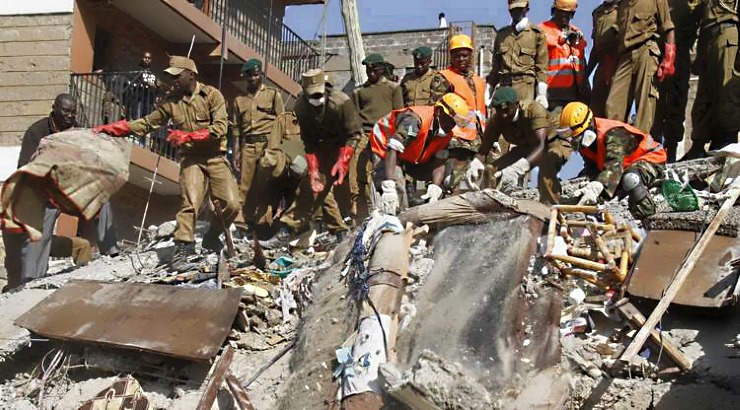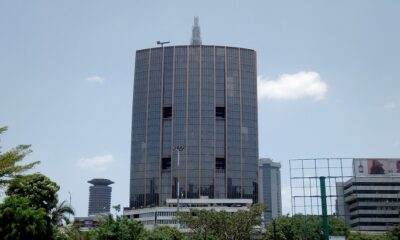Features
6 Main Causes of Building Collapse in Kenya
Rogue developers circumvent regulations to hurriedly build substandard structures.

The frequent cases of collapse of buildings in Kenya have become a major concern among all the stakeholders in the local construction industry.
Barely three months go by without hearing reports of a collapsed structure – which in some instances result in loss of lives.
In a bid to stem the unfortunate occurrences, President Uhuru Kenyatta in January 2015 commissioned an audit of all buildings in Nairobi and it was found that only 42 per cent of the structures in the city were found fit for habitation.
According to the report, these are most common causes of buildings collapse in Kenya:
1.) Weak foundations
Foundations form the footholds of buildings and therefore need to be strong enough to support the subsequent load.
Adequate foundations are usually costly and depending on the strength of the soil and expected load of the building, they can contribute up to half of the entire cost of the building.
For instance, buildings constructed on sandy soils, swampy areas or those with several storeys require far stronger foundations than those built on solid grounds or those with fewer floors.
Some developers, however, want to save money when building on weak grounds by cutting on concrete and reinforcements resulting in the collapse of buildings.
A six storey building that collapsed in Huruma, Nairobi, on April 29, 2016 is a good example of this kind of negligence.
The ill-fated building, which was put up next to a river, collapsed after a heavy downpour killing at 51 occupants and injuring more than 100 people.
Although the building may have had a sound design and structure, the ground beneath it was incapable of carrying its load and it had to collapse.
2.) Substandard materials
The Kenyan market is currently pervaded by counterfeit products and the construction industry has its fair share of these goods. Most of these materials are weak therefore unable to support a building.
While some contractors might be duped by counterfeiters with fake authentication certificates into buying substandard materials, some individuals use these goods knowingly to cut costs.
READ: Headache for Builders as Fake Products Flood Market
The use of scrap metal instead of steel, low quality stones and incorrect concrete ratios are a very common practice resulting in many weak buildings which are possible death traps.
3.) Poor structural design
A structural engineer can make errors in computation and fail to take into account the weight that a structure will be expected to withstand.
The engineer may also follow inaccurate theories and use inaccurate data and make wrong choices of materials during construction of a building. Such an engineer will be responsible for future collapse of the building.
4.) Unqualified labour
All construction work should be carried out by qualified contractors under the supervision of competent architects and engineers.
The services of such professionals come at a cost and in a bid to cut on costs, some developers prefer to hire uncertified jua kali artisans – most of whom are nothing but quacks – which has led to the rising building collapse cases.
RELATED: State Activates Brutal Crackdown on Rogue Builders
Such unskilled workers lack the technical know-how on construction processes and requirements such as the ideal standards of structural steel as well as the correct concrete mixing ratios and curing procedures for optimum strength in relation to the expected load of the complete building.
Although the cowboy developers initially think they are saving a lot of money, in the long run when such buildings collapse, it becomes a perfect example of being penny-wise and pound-foolish.
5.) Greed for wealth
The influx of people into urban areas over the years has resulted in an ever growing demand for housing in major towns across the country.
In a bid to cash in on this, rogue developers are circumventing building rules and regulations to hurriedly put up substandard structures.
Some are adding extra floors originally not planned for resulting in heavier load than was planned for in the foundation. This is especially common in the less affluent residential estates.
Due to the high number of structures springing up daily across the country, the National Construction Authority says it is unable to inspect each and every one of them since it is understaffed.
It is therefore up to citizens to ensure a building has an occupancy permit before renting a unit and to report any suspicious constructions taking place in their neighbourhood to avert disasters.
6.) Corruption
The government agencies mandated with inspection of buildings to ensure they are safe for human habitation are riddled with corruption and inefficiencies.
For a few thousand shillings, corrupt inspectors are willing to turn a blind eye on malpractices resulting in fatalities and financial loss.
Besides laxity in enforcement of construction codes these violations, even those that cause loss of life amounting to criminal negligence are rarely punished.
Although there are many reasons as to why a building may collapse, most of the incidents in Kenya seem to be driven by greed for wealth and corruption. In fact, it would be accurate to cite the two as the main real reasons as to why why buildings collapse in Kenya.












